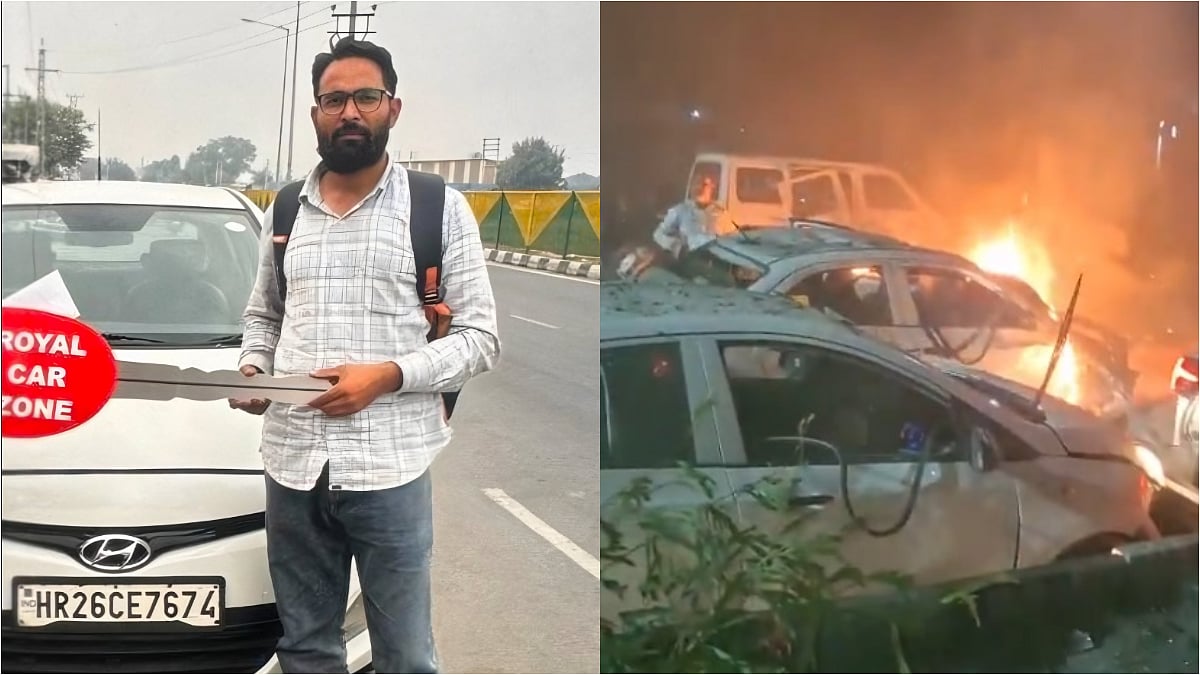‘Italy selects only students the best’
STEFANIA COSTANZA, Consul General of Italy in Mumbai
There are about 5,000 Indian students studying in Italy— both in private and in public universities. Most of there students are in public universities. The Italian and foreign student will be treated equally once the student is enrolled into an Italian University.
Of the 5,500 student visas issued for Indian students, about 75 per cent of that has been issued from the Mumbai office. We are proud of that and we want to do more. However, we also have a very high rejection rate.
We do reject one-third of all applications because we really have a goal. We want the best students. I strongly believe that Italy can offer the students a lot more than they can imagine. The history of Italy and success many Italian and their organisations have had is far reaching. Some success are Jeep, Fiat Chrysler, Ducati, etc.
Many of the Italian companies manufacture in India. There are about 632 Italian companies that are present in India. About 200 of them have invested in India. Going back to education, I would like to add Italians have mastered soft skills. It is what we are and it is in our DNA. So, we can either be a super fashion designer or you can be an engineer, or can start your own new company.
Most of the students going to Italy from India are girls. This is mainly because my country offers a very safe environment and there are two direct flights everyday connecting both countries. So it is easy to reach. But this relation is not limited to Indian students travelling to Italy, but also other way round. We want international students to stay back, but we want them to be in the right place.
We want students that pass from our universities to be global students. These students can be part of any Italian companies or any other companies that are present anywhere in the world.
While I do not have figures with me right now on the number of Indian students staying back in Italy every year, but I am aware that there are 1,50,000 Indians residing in Italy— making it the first continental European country with that many Indian residents.
Germany saw 5.3% rise in international students'
SHUBHADA CHOUDHURY, Head, Information Centre DAAD, India
There has been an increase of 18.44 per cent in the number of Indian students going to Germany for studies in 2018 compared to 2017, as per the latest winter semester data. This takes the number of students to 20,810, which is really huge and has doubled over the last five years. Just as in the US, in Germany as well Indians form the second largest contingent of international students.
The total number of international students in Germany has grown by 5.3 per cent and that is four times the global average. So, that is a huge growth that Germany is witnessing right now. The STEM (Science, Technology, Engineering, Mathematics) is the most important field.
But a lot of movement is happening in law, management and social studies as well. In Germany, management programmes are really growing at a very fast pace. In case of gender ratio of Indian students going to Germany for studies, males comprise 72 per cent while females form 28 per cent.
The most important thing Germany offers is the level of innovation that comes out of the country and that does not come out of thin air. There is a certain structure to it, which is followed by the universities, technical universities, and a special type of universities— the institutes of applied sciences— which focus on industry orientation.
And the other universities and technical universities focus on research orientation. So there is a very clear bifurcation between these two. Berlin is the hub for startups and a lot of incubators. There are many universities that are putting in investments for incubators.
The Excellence Initiative, which has all been extended in Germany for the next five years, has attracted investments for startups, new-edge research, Artificial Intelligence and others. Another interesting fact of Germany is that it does not have any rankings and does not really believe in rankings. They do not have any official rankings.
However in recent times, 47 German universities have been listed as the best in the world. Among 30 European study destinations, Germany was recently ranked first. Yet another very important aspect of Germany is that either there is no fee (scholarships and freeships are granted) or it charges very low tuition fees.
About 95 per cent of German universities do not charge a tuition fee. So, a two-year Master's in Germany would cost you anywhere between Rs 16 to 18 lakh, depending on the place that you are staying in.
Germany is a very small country compared to India, yet Germany has 400 universities. According to the German government, a student would need around Rs 8 lakh to live in the country.
The German universities offer more than 2,000 International programmes which are primarily taught in the English language. The universities also offer bilingual courses— English and German. It is extremely important to know German in Germany.
This is mainly because students are allowed to work on the student visa for 120 full days, which is quite a lot of time, but again a lot of that also depends on your level of proficiency in German.
Basically, having a German proficiency is very important. It is an added advantage. After the programme is over, a student is allowed to stay back if he or she gets a job in line with the qualifications possessed.
If you work in Germany for two consecutive years, and you fulfill the social and work security guidelines, you are eligible to apply for a German Blue Card. So a lot of possibility is there.
France offers 500 scholarships to Indian students
VIKASH GOLLA, Manager, Campus France, Mumbai
Every year the French Embassy in India invests €1 million. We offer more than 500 scholarships every year across various platforms. So the French Embassy wants to up the intake of Indian students going to France every year. Our personal target was to send 10,000 Indian students to France by 2020. But we have actually achieved that this year itself.
By 2025, we intend to send around 20,000 Indian students. We are on the right track as well. We have 13 offices across India and there we also hold counselling sessions. We promote franchise education in various universities and colleges as well. As regards to marketing, the French Higher Education, Campus France is quite aggressive. Last year when President Macron had come to India, education was one of his priorities.
There was also a mutual agreement signed between India and France. They have become the first two countries to mutually recognise each other's degrees as well. We have 74 public universities, 220 business schools, 224 engineering schools, and the list goes on. Out of the 10,000 students that went to France, management and engineering seem to be the most popular choices.
There is a slow increase in students opting for the Arts and Design too. There are two ways you can apply to France —one is through the candidature process, which is for public universities; and another one is a direct candidature process, which is when you have the admission letter in hand, you create an online Campus France account and then you apply via Campus France.
There is a slight difference between the public university procedure and the private university procedure. For the September intake, the scholarship which is the most famous is the Charpak Scholarship— a merit-based scholarship.
There is another needbased scholarship as well. The criteria for this scholarship is that your annual family income should be less than Rs 8 lakh per annum. There is another scholarship especially designed for women.
Doing your own research is the key
RYAN PEREIRA, Regional Officer, United States-India Educational Foundation
There are about 4,500 plus different universities in the US for everyone. The flexibility US education offers is not limited to the variety of the courses that they offer, but also the ability to change to their fields. For instance, you do mechanical engineering, then you decide to switch to a related field.
As long as you explain how you are going to use those skills that you learned in mechanical engineering in your new field (this can be permitted). The other aspect about flexibility is that you get to mould your personality the way you want. It is not a rigid curriculum.
If you are going to do masters in computers there are seven courses you have to take, then you get to pick and choose which courses you want or will suit your individual needs. We did talk about rankings, but I do not appreciate talking about ranking.
The reason is that when you are looking for universities, it does not matter which country you are looking for, (what matters is that) it should always be the right fit for you— that is the single most important point. It is about having a successful experience at the university rather than just being associated with a famous University.
Additionally, in the US, you have a very global, diverse faculty and student community. So it gives you the opportunity to learn about other countries. In this day and age of a global world, having that kind of experience is very useful. While the US has some expensive universities, we also have universities that are quite affordable.
Just by saying that you need admission to this particularly university and not researching about it, is not the right way to go about doing things. Take your time. Make your own choices. One of the differences between the Indian education system and the US education system— if you are applying for higher studies— is that in the US you have to send in your applications at least one year in advance.
There are five steps or processes involved for applying for higher studies: research your options, finance your education, complete your application, apply for the visa, and then get ready to go. For more details students can access Education USA website and from there you can get help for each and every step.
But it is very important that you do your homework before meeting us. Education USA represents all the accredited US universities. So we are not going to tell you that you should apply to this university and not that university.
We cannot play favourites. We want you to do your own homework and look for universities that are right for you. We guide you only in this one-year process.
Post-study work visa by 2020 to make UK attractive
BHARATI BACHA, Expert on UK education
The United Kingdom has a long tradition of offering excellent education starting from school to post-doctoral studies.
A number of Indian national figures have studied in the UK namely Mahatma Gandhi, studied law at University College, London; Dr B R Ambedkar, studied at LSE; Jawaharlal Nehru and Dr Manmohan Singh at Cambridge.
The list is long and varied. In Britain, there are 395 universities and colleges offering over 50,000 undergraduate (UG) and post graduate (PG) courses. Almost all topics under the sun are covered in UK. All UG courses are for three years and postgraduate courses are for one year, which includes MBA as well.
So students studying in UK finish their courses a year in advance ahead of other countries. This means your tuition and living costs also come down. A degree from UK is recognised all over the world. For all courses, there is a centralised system called UCAS where you can apply to any six universities.
There are deadlines if you are applying to Oxford or Cambridge— except for a music award — you must have completed the process of application on October 15 this year to be able to join the programme next year. For other universities you can apply as late as maybe April, but you have to do it through the centralised form and there is a small fee for this.
Generally, no application fees are charged for postgraduate courses. So that is a plus point. I know in other countries you pay large fees to apply for postgraduate courses. There are many scholarships available that are all merit-based. The process of scholarships has to start at least 12-14 months in advance.
While many universities will say that it is alright if you do not take IELTS examination, I strongly recommend Indian students to take the examination. The examination means one tick mark for your visa application. Secondly, all students should pay particular attention to their personal essays.
This is very important mainly because UK is an agents’ market— there are so many agents offering to help you to get admission to UK universities. UK’s changing visa rules have had an impact on the number of students going to the country. But for students who will join in the year 2020, they will be able to get two-year post-study work visas to find jobs and get international exposure.
Prior to 2012, students were offered post-study work visas, so once they finish their course, they could be in the country for two years and look for a job. But when this work visa was stopped in 2012, admission figures fell quite a bit. Seeing this drop, the UK realised that they needed to bring back the two-year work study visa.
According to a report published recently, 21,165 Indian students (between April 1, 2018 and March 31, 2019) were granted a four-tier student visa. This is a visa that is granted to students who are going to the UK for more than six months of study. The number of student visas issued in March 2018 was 15,161. This shows an increase of 40 per cent.
New Zealand follows three-pronged international education strategy
JUGNU ROY, Country Manager India, Education New Zealand
New Zealand has about 20,000 new Indian students looking at the country each year. But we are not really focused on those statistics. For us, students are not numbers.
Last year, the New Zealand government came up with an international education strategy which has three key goals. The first one is around the education.
This will also allow New Zealand to do more collaborations, look at internationalisation, wherein we set a global stage, where New Zealand institutions and international institutions work together. The other one, which is really important, is the student experience.
Our university campuses have infrastructure which is best in the world. We offer courses which widely cover all subject themes. There is a strategy which was put together to ensure that students have the best experience ever in the country and that is checked on a regular basis. Regular tests and polls are conducted.
There is something which is very unique about New Zealand — the first country in the world to have a code of Pastoral Care for international students, which reiterates that the interest of an international student has to be safeguarded at all costs, that is most important. All institutions, universities, colleges, which recruit students from abroad are signatories to that.
If the institutions are signatories to the code of Pastoral Care, then the agents who work for those universities or colleges are also signatories to that. Basically, when you meet with any international university or any university from New Zealand or any agent who is representing those universities, you will get information which is absolutely authentic.
If they are not authenticated, then those institutions can be taken to task by the New Zealand government. The student experience is a very important part of it. The third key pillar of the international strategy was global citizenship.
The idea is to make global citizens— people who are comfortable to live wherever they are. When you are studying in New Zealand, you also have poststudy work rights. So you do get up to three years, if you are doing any kind of degree programmes. A lot of students also apply for permanent residency, as they start working there.
So those opportunities are also open for you. With regards to scholarship, the New Zealand government offers the New Zealand excellence awards—primarily postgraduate scholarships. We do have same for undergraduates, but primary is postgraduate scholarships. So you can get all that information on our student website.
Canada and India enjoya close relationship
CARLOS ROJASARBULÚ, Consul and Head of Trade & Investment, Consulate General of Canada in Mumbai
Canada and India have a very close and long relationship. In case of bilateral trade, we stand close to USD 12 billion. After adding services, the bilateral trade is likely to be at USD 20 billion.
But if you add the investments by institutional investors or pension funds, you certainly can add another USD 20 million. Overall, the economic relationship between both countries are huge. Other than trade, we have people exchanges—that is students going to Canada. Last year, more than 1 lakh permits were given to Indian students to study in Canada.
We have some of the world's best universities around the world which is certainly leading schools and business schools as well. Most Canadian post secondary education is publicly funded. Due to this funding mechanism, we have had a good level of investments into our education system especially into our schools.
In the case of Canada, these matters are managed at the provincial and territorial level. We have 10 provinces and three territories in our country. We do have certain work permits and certain programmes that allow students to make their transitions—to gain valuable experience— onsite and also working for a certain number of hours off-site.
I am referring to the postgraduation work permit programme specifically, which provides students the opportunity to work in our country. This is possible only after the student completes his or her studies and acquires qualifying work experience. You can also volunteer and work part time, while you are attending your programme, which provides hands-on experience.
At the same time, you see this as an opportunity to learn about Canadian culture as well. We also offer an environment that is welcoming, safe and multicultural. We have a very diverse population that comes from all over the world. About 22 per cent of Canadians are immigrants.
And as a result, a lot of our history and all of our values are informed by the fact that we have this important influence of immigration. The Indian Diaspora in Canada is one of the largest— with over a million Canadians of Indian origin. Each university has its own policy regarding admission.
So, the best way to approach the admission process would be to identify which University or programme you would like to attend, and then inquire about the requirements. But you will have to do your own research and connect with the universities in order to specifically inquire about admission.
The study permits and other such clearances are administered by our Federal Department of Immigration, Refugees and Citizenship, Canada. I would encourage you to visit the site to get a real sense of the specifics.
Ireland’s student visa refusal is less than 5 per cent
DAVID FLOOD, Director, India and South Asia, Enterprise Ireland
Ireland is a small country with a population of 5 million people. For Ireland, education is represented by about 33 colleges and institutions based in Ireland. From the 33 institutions, about 20 actively come to India on a regular basis and connect directly with students here. We run two rounds of student fairs every year.
While the first round takes place in October, the second round will be held in Mumbai next February. For more information on Ireland, please do visit the website Education in Ireland. Being a student coming to Ireland is a good experience, because there is a lot of cultural affinity between our two countries.
People from India and Ireland tend to get along really well. Ireland is a very welcoming country. So when you arrive there, it is very easy to fit in. There are already a good number of Indian student studying in Ireland. Over the last five years, we have seen a doubling of student numbers from India coming to Ireland.
Our primary language is English. So all of our courses are taught in English. Ireland has a very vibrant culture. So it is a very interesting and exciting place to live. We have institutions not just in the cities, but also in small towns and rural locations.
So you can really get a different experience depending upon what is that you are looking for. Traditionally, Indian students would have come to Ireland for STEM subjects. Engineering was probably the most traditional choice in previous years, but now we see students opt for different programmes. And a lot of that is driven by the fact that Ireland is a centre for a open global economy now.
Today, Ireland is a place where a huge number of overseas multinational companies (MNCs) come to set up their base because they want to access talent and also European market. We have over 1,000 multinational companies that have their European headquarters or a substantial presence in Ireland. This could be very helpful or very interesting in terms of your choice.
After you graduate, Ireland offers two years stay-back option. Many of these MNCs are looking for top-level graduates in areas like Artificial Intelligence; ICT, telecom and life sciences. So, companies like Google, Facebook, AirBnB, Roche, Abbott and others—all have their European headquarters in Ireland.
This really influences you career decision after graduation. Most of our students coming to Ireland would be looking at postgraduate programmes and these courses are usually a year long. So, basically you only have to consider fees and living expenses for one year before you graduate and potentially move on to the new role.
I would like to add that all of our colleges offer scholarships and these can be offered at the educational fairs that we hold. These scholarships can be on the spot, based on an interview that you might do with a college or any institution.
So it is worth coming along on the chance that you might actually get a really good deal across the table. Another characteristic of our education system is that we are very collaborative with the industrial sectors across the economy.
So we have a series of technology centers, which are actually collaborative institutions involving educational institutions, multinational companies, small medium enterprises (SMEs) and start-ups etc. These collaborative institutions also discuss roadmaps for future developmental technologies— based on thematic areas like data analytics, life sciences, material sciences, manufacturing 4.0.
These are really fantastic opportunities for students who are looking to maybe move into a research career. Regarding visas, our visas are handled through VFS. So all applications are made online and then you go in with your documents at local VFS office.
The number of refusals is less than 5 per cent. We have a very high number of applications being approved. These numbers have dramatically increased — 100 per cent increase in the last five years









